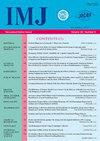氟喹诺酮类药物的国际严重预警要求和明智选择策略
Q4 Medicine
引用次数: 0
摘要
本文对目前有关氟喹诺酮类药物不良反应的报道进行综述。作为一组对微生物病原体有广泛作用的抗生素,它们最近在传染病的临床实践中得到了充分的应用。然而,适应症的传播伴随着不良反应增长的信息积累。首先提到的反应包括胃肠道反应、过敏反应、光敏化、QT间期延长、关节和肌腱功能恶化、神经系统损伤。某些毒性反应导致了某些药物的禁用:替马沙星、格雷帕沙星、特氟沙星。进一步观察了低血糖反应、嗜酸性粒细胞增多、肝损伤的发展。在毒性机制中,自由基反应,抗生素分子的结构修饰被考虑在内。因此,美国(FDA)和欧洲专家都在密切关注限制这些药物适应症的严重警告。一些研究表明,由于胶原代谢的影响机制,肌腱断裂的频率增加,主动脉瘤及其破裂的风险增加,胶原代谢广泛存在于关节和周围组织以及主动脉中。这些报告显示了关节、肌肉、神经系统损伤的频率,以及患者精神领域单独制定的并发症。神经系统损伤和精神障碍方面的信息积累导致了限制感染易发过程适应症的建议,包括尿路感染复发和腹泻预防。限制条件还包括:患者年龄大、既往对这些药物的记忆反应、关节和肾脏疾病、与糖皮质激素的相互作用。关键词:氟喹诺酮类药物,不良反应,适应症限制,国际推荐。本文章由计算机程序翻译,如有差异,请以英文原文为准。
INTERNATIONAL SEVERE WARNING REQUIREMENTS AND SMART DECISIONS IN CHOICE TACTICS FOR FLUOROQUINOLONES
The paper is devoted to the review of the reports on current ideas about adverse reactions of using the fluoroquinolones. As a group of antibiotics with a wide range of effects on microbial pathogens, they have recently found a sufficient use in infectious diseases in clinical practice. However, the spread of indications is accompanied by the accumulation of information about the growth of adverse reactions. Among the first mentioned ones there were reactions in gastrointestinal tract, allergic reactions, photosensitization, prolongation of the QT interval, deterioration of joint and tendon function, lesions of the nervous system. Some toxic reactions contributed to the banning of certain drugs: temafloxacin, grepafloxacin, trovafloxacin. Further observations were made on the development of hypoglycemic reactions, eosinophilia, liver damage. Among the mechanisms of toxicity the free radical reactions, structural modifications of the antibiotic molecule are considered. Therefore, both the United States (FDA) and European experts are paying close attention to serious warnings to limit the indications for these drugs. Some studies have shown an increase in the frequency of tendon rupture, as well as the risk of aortic aneurysm and its rupture, due to the mechanisms of effects on collagen metabolism, widely present in the tissues of the joints and surrounding tissues and in the aorta. The reports demonstrate the frequency of lesions to joints, muscles, nervous system and separately formulated complications in the mental sphere of patients. The accumulation of information on the injury of the nervous system and mental disorders resulted in the proposal to limit the indications for the easy course of infections, with their recurrence in urinary tract infections, diarrhea prevention. Restrictions also include as follows: old age of patients, previous anamnestic reactions to these drugs, diseases of the joints and kidneys, interaction with glucocorticoids.
Key words: fluoroquinolones, adverse reactions, restrictions on indications, international recommendations.
求助全文
通过发布文献求助,成功后即可免费获取论文全文。
去求助
来源期刊

International Medical Journal
医学-医学:内科
自引率
0.00%
发文量
21
审稿时长
4-8 weeks
期刊介绍:
The International Medical Journal is intended to provide a multidisciplinary forum for the exchange of ideas and information among professionals concerned with medicine and related disciplines in the world. It is recognized that many other disciplines have an important contribution to make in furthering knowledge of the physical life and mental life and the Editors welcome relevant contributions from them.
The Editors and Publishers wish to encourage a dialogue among the experts from different countries whose diverse cultures afford interesting and challenging alternatives to existing theories and practices. Priority will therefore be given to articles which are oriented to an international perspective. The journal will publish reviews of high quality on contemporary issues, significant clinical studies, and conceptual contributions, as well as serve in the rapid dissemination of important and relevant research findings.
The International Medical Journal (IMJ) was first established in 1994.
 求助内容:
求助内容: 应助结果提醒方式:
应助结果提醒方式:


